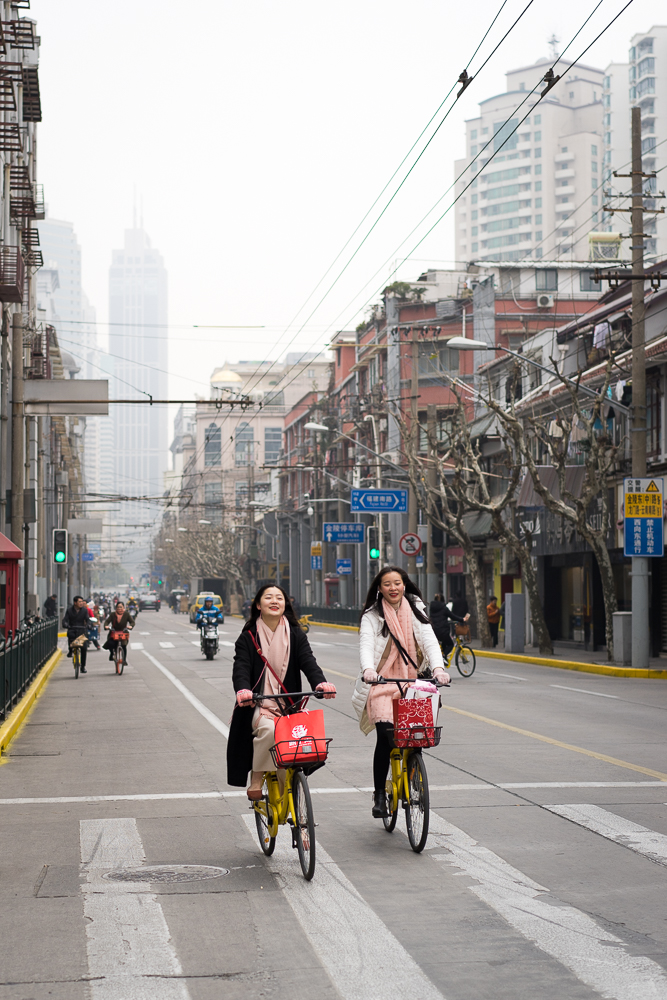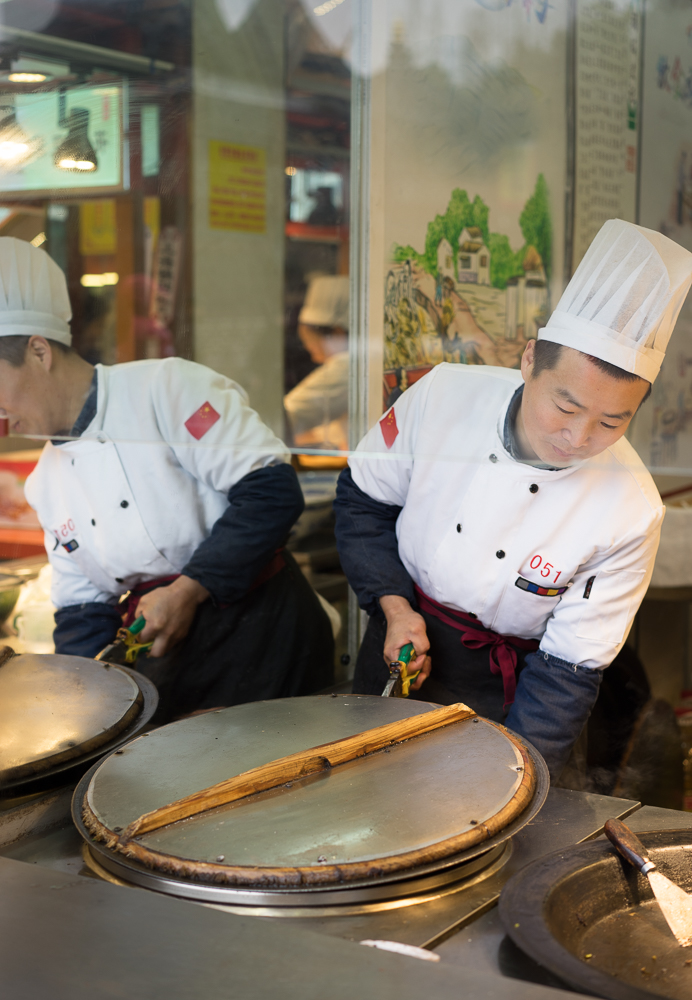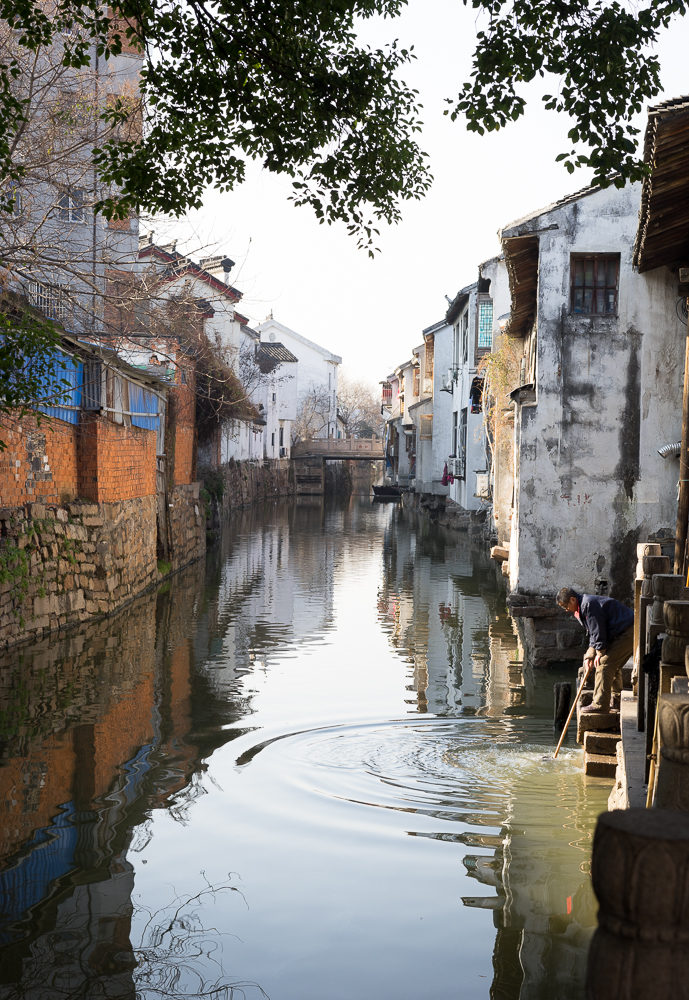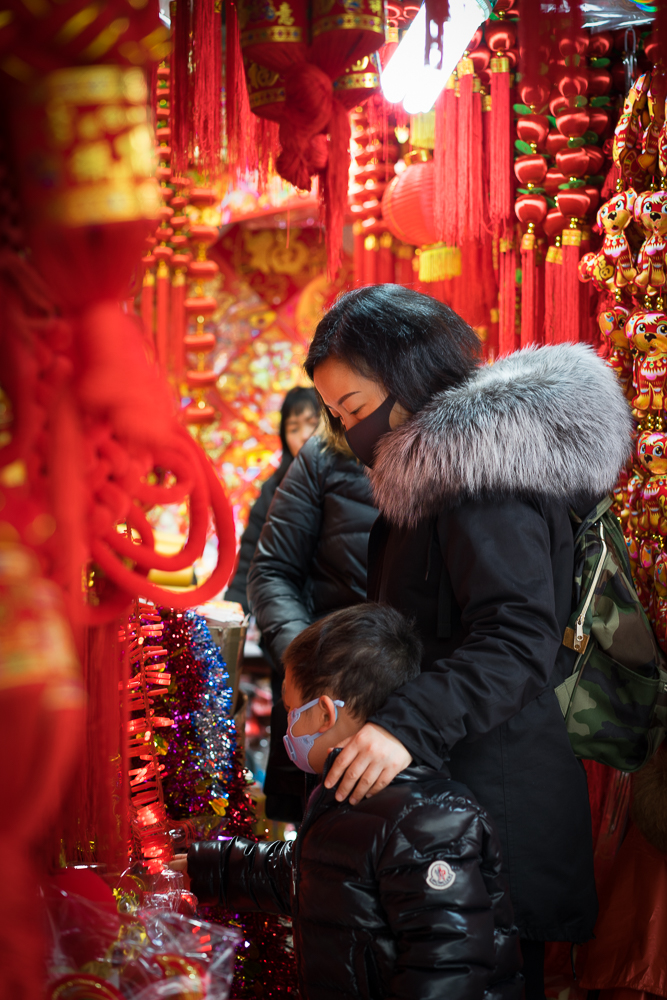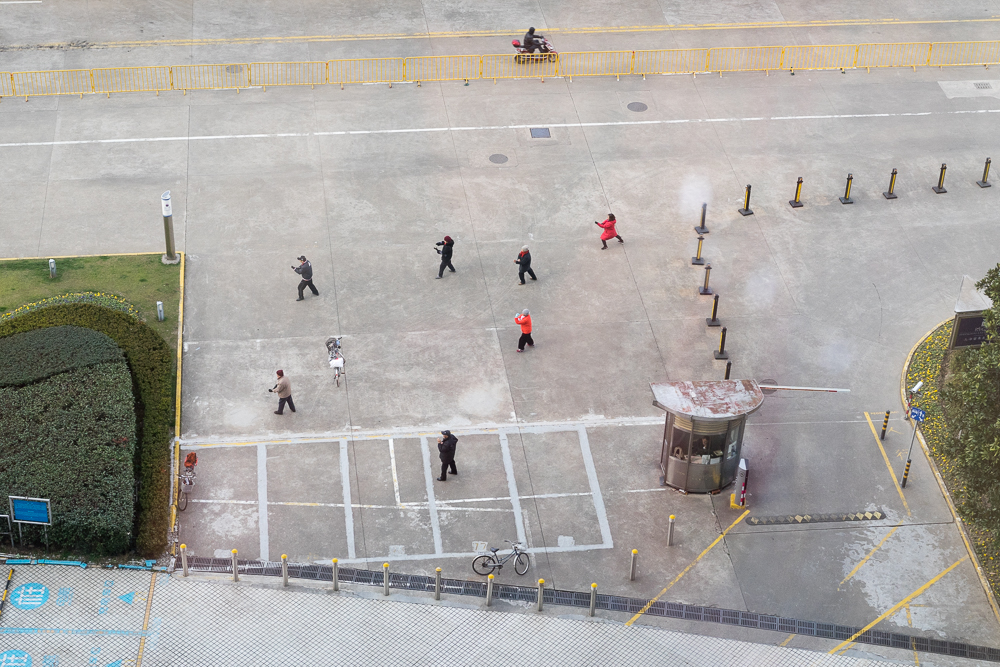As my body fell in and out of balance to the undulating movements of the Shanghai Metro train, my eyes and brain continued to scan for photographic opportunities. None immediately presented themselves, and so my thinking turned to the next stop and the decisions to be made about my continuing journey.
A man had entered the carriage at the previous stop, and much to my surprise he approached me. When he reached a somewhat uncomfortable proximity, he began to study the camera around my neck. He moved his head around as if his enquiry was of the utmost importance and finally stepped back a little to look me straight in the eyes. “Me: M9”* he forthrightly announced. I smiled as the penny dropped and we stood in a companionable language-less fellow photographer’s silence. The universal language of the small format photographer.
The above encounter, heartwarming as it was, was in no way typical of my experiences of shooting on the streets of China. Up until that point in my travels, I had moved - it felt like - largely as a ghostly figure who had been granted special permission to photograph with impunity. I should be careful not to mistake Shanghai for ‘China’ (the larger entity), and I suppose I should consider the slightly blissful ignorance of the stranger who has no language (I remember well the chagrin of the man on the Paris Metro whom I addressed using the wrong pronoun form). Nevertheless the impression remains: doing street photography in Shanghai was for me a delightful and effortless experience. The Chinese people were curiously indifferent to my photographic posturing (was this the ‘another tourist’ effect?). So it was that I enjoyed the twofold advantage of great freedom, and that freshness of vision that comes from arriving in an unfamiliar land.
Pingliang Road Intersection, Sony RX100 MkI
During my stay I developed a very high regard for Chinese people. Notwithstanding the danger of generalising (and being mindful of the possibility that as I stranger with no language I simply missed the cusses and negative asides), there is a quiet humour and warmth to the Chinese people that hadn’t come across to me in screen and other media representations. As for any stranger in an unfamiliar place, there were things that were exoctic to me at the start: the face masks, the extension to mind and body in nearly every Chinese person that is the mobile phone, the unquestioned coexistence of fragile human flesh and speeding motorcycle on the pedestrian pavement (and oh, how I nearly met my doom on so many occasions!). And sure, if you are on the Metro, expect to get pushed. Gently pushed, without aggressiveness and with some care, but pushed nevertheless. You are but one of some 1.4 billion people.
051, Sony A7II
On a visual level, Shanghai offers up a heady cocktail for the photographer. The city is enormous, and is dominated by skyscrapers, commerce and competing modes of transport. Naturally, there are plenty of tourist sites, meaning that traditional Chinese styles and customs commingle with the dominant background of modernity. This mixture created a slight tension in my shooting: on the one hand the desire to record visibly ‘Chinese’ culture; on the other my street photographer’s instinct to look for juxtapositions and events that would deliver some social insight. I wanted to avoid making images that were too obviously ‘tourist’ in nature, however, this is in reality difficult to avoid. Not only was I a tourist after all, but I wasn’t about to numb the joy and excitement of my visit with too strict a shooting regime. All in all, I had the equivalent of three full days worth of shooting to work with.
Street Repairs, Sony A7II
The Officer, Sony A7II
I had decided early on to honour my current work in black and white, and I settled on Ilford’s HP5+ as my primary film. There will be much more about my experiences shooting this in my next post, as well as a final post about the work I did in 5x4. I simply couldn’t resist the draw of colour in China, and, while I did shoot a roll of colour film along the way, I wanted to use my Sony A7II mirrorless camera for this task. I have been making photographs for long enough to remember the somewhat disappointing colour prints I had labs make for me from colour transparencies. My technical know-how and ambitions didn’t stretch beyond these prints at the time, and I have since found a much happier home for my occasional colour work in contemporary inkjet printing. (I suspect I am not alone in this: digital and inkjet have been something of technical revelation for colour work.)
The ancient town of Mudu on the Yangtze river (about two hours drive from Shanghai). Sony A7II
The Sony A7II is a marvellous machine. It is small, packed with technology, and, thanks to an underlying metal chassis, reassuringly solid. The viewfinder is efficient and effective, if not quite the equal of a glass one, and the in-body stabilisation gives a tangible advantage in hand-holding slower shutter speeds. With my Novoflex adapter, I can mount my Leica and Zeiss lenses, and a clever magnification system enables pinpoint manual focussing. My Sony / Zeiss 55 is arguably the most technically accomplished lens I own; it certainly makes a claim to being the sharpest. Built like a tank with a metal focussing ring, it is relatively small and balances superbly on the camera body.
Purple Lantern, Sony A7II
It isn’t quite all roses in the garden of Sony mirrorless, however. Despite the technological array at my fingertips (and being the king of high ISO shooting in my kit), I don’t have quite the same satisfaction in shooting with it as I do my Leica rangefinder. The reasons for this are numerous and warrant a more detailed exploration, perhaps for another occasion. I don’t find the Sony as fluid to use, nor have I entirely gelled with its viewfinder and focussing options. On are more tangible level, the battery life is appalling (a second battery, or more, is a must - I suspect the stabilisation is a huge drain), and I’ll be darned if I don’t turn the aperture wheel the wrong way every time I stop up or down (I’m convinced this is because turning an actual aperture ring is so hard-wired in my brain that I think I’m turning a ring when I turn the wheel - and the direction is wrong!).
A further quirk is worthy of a mention. The camera insists on defaulting to a 1/60 second shutter speed when in aperture priority mode. It almost always does. While there is no doubt a logic behind this, especially given the in-body stabilisation, the problem is that 1/60 doesn’t always work. With my 55mm lens mounted, it is quite in keeping with the old advice to use the reciprocal shutter speed of the focal length. So, 55mm = 1/60. This is, however, somewhat conservative if you are looking for pin-sharp shots. You are much better off with 1/125 second or even faster. The camera might be stabilised, but the world is not. Nor is the body of the street shooter who sometimes puts camera to eye before the muscles can arrest the body’s momentum. I see the results of this in my shots. You don’t always have the luxury of being able to steady yourself properly.
Shoppers, Sony A7II
Early Morning Tai Chi, Sony A7II
How wonderful to wake up to the sound of a gentle Chinese bell and the sight of people practising Tai Chi on the street.
A bride to be receives directions in a photoshoot in Mudu. Sony A7II
I had a thoroughly enjoyable time doing street photography in China, and I hope this is something that comes through in my images. It’s tempting to make a recommendation about China as a potential destination for photographers, but not everyone shares my perspective and predilections. If you practise street photography, and think you might be coming from a broadly similar perspective as my own, I wager you’d like it. In many respects, Shanghai is a lot like London, Paris, or any other major metropolitan centre. It’s the Chinese visual culture that makes Shanghai special, and experiencing it was a great thrill for this particular western newcomer. I would like to have spent longer in China, and would certainly like to return. For now I’ll be busy processing, printing and savouring the work I did there.
In the next instalment I’ll be presenting my China work on black and white film. I hope you are able to take a look.
* Leica M9 digital rangefinder.
Construction works surround Shanghai's ageing Indoor Stadium, photographed here in the early morning light.
